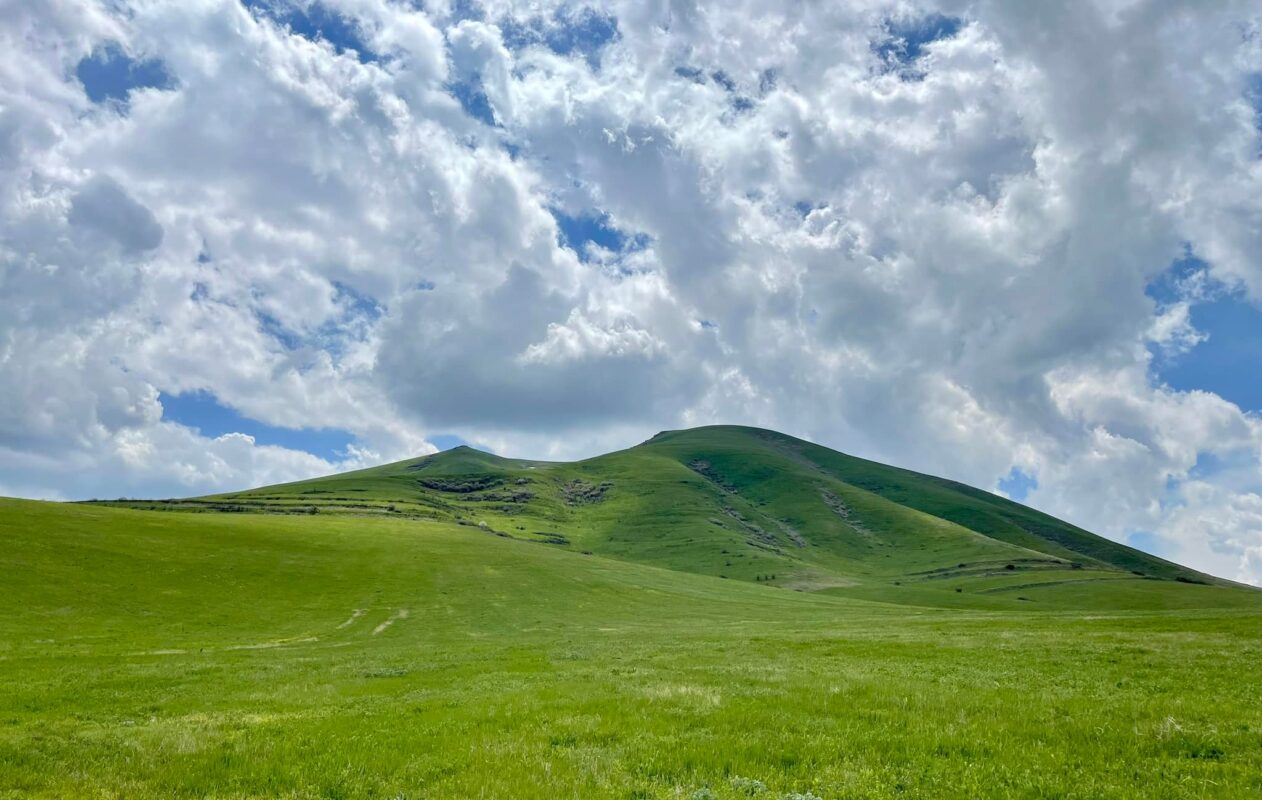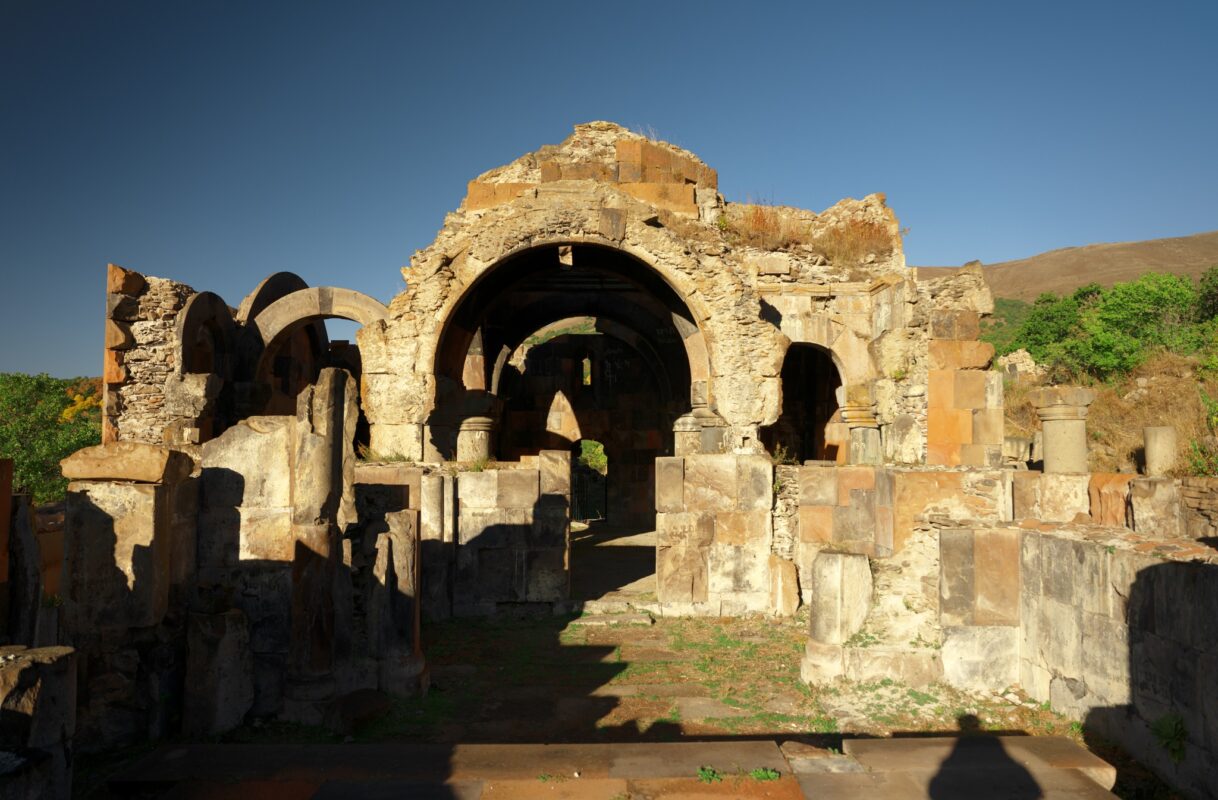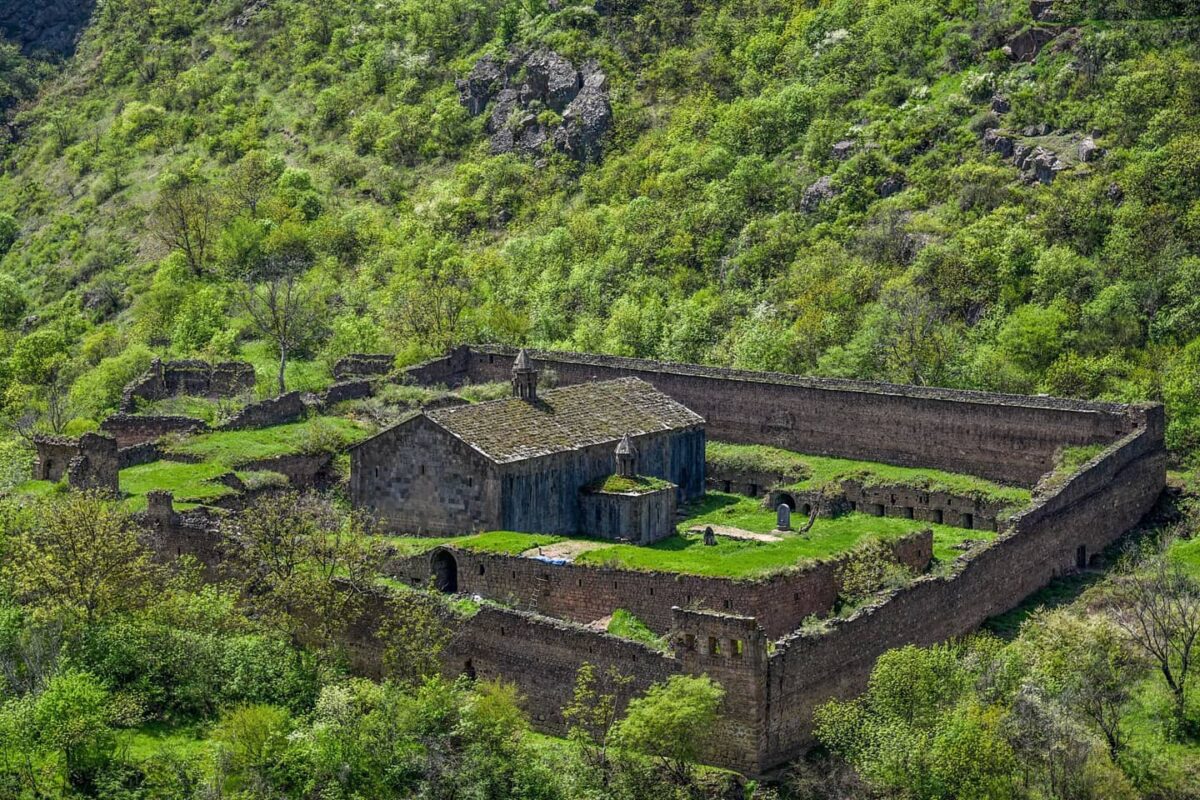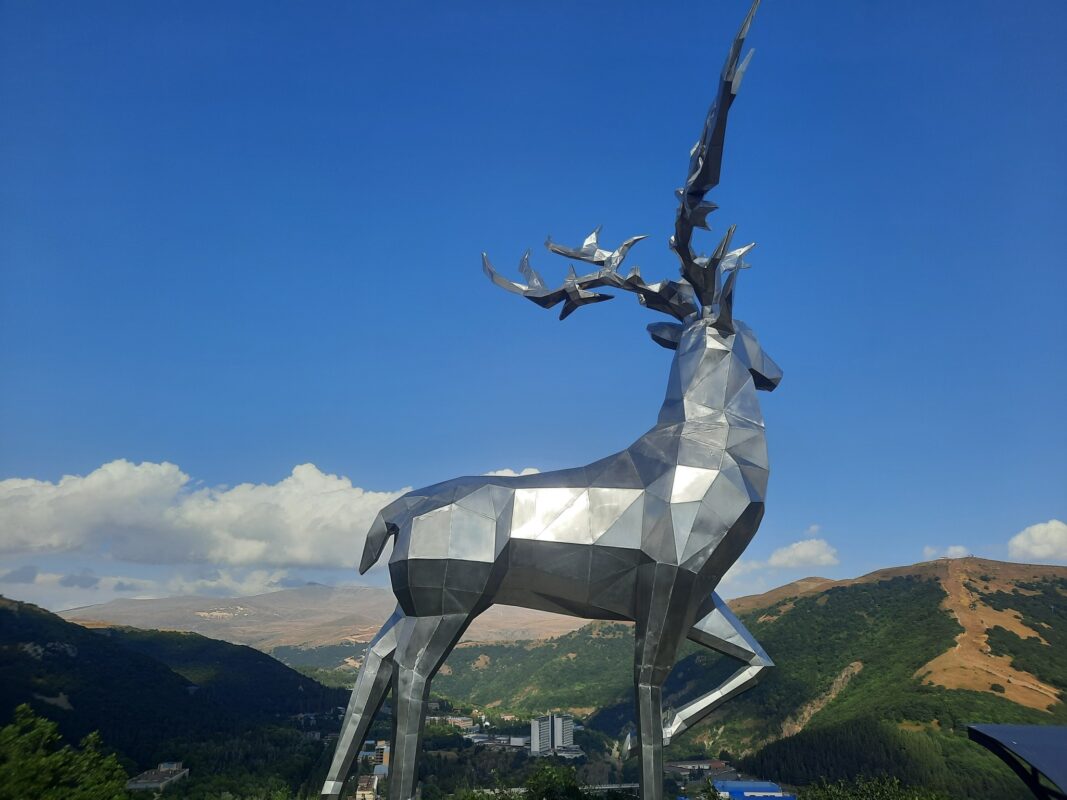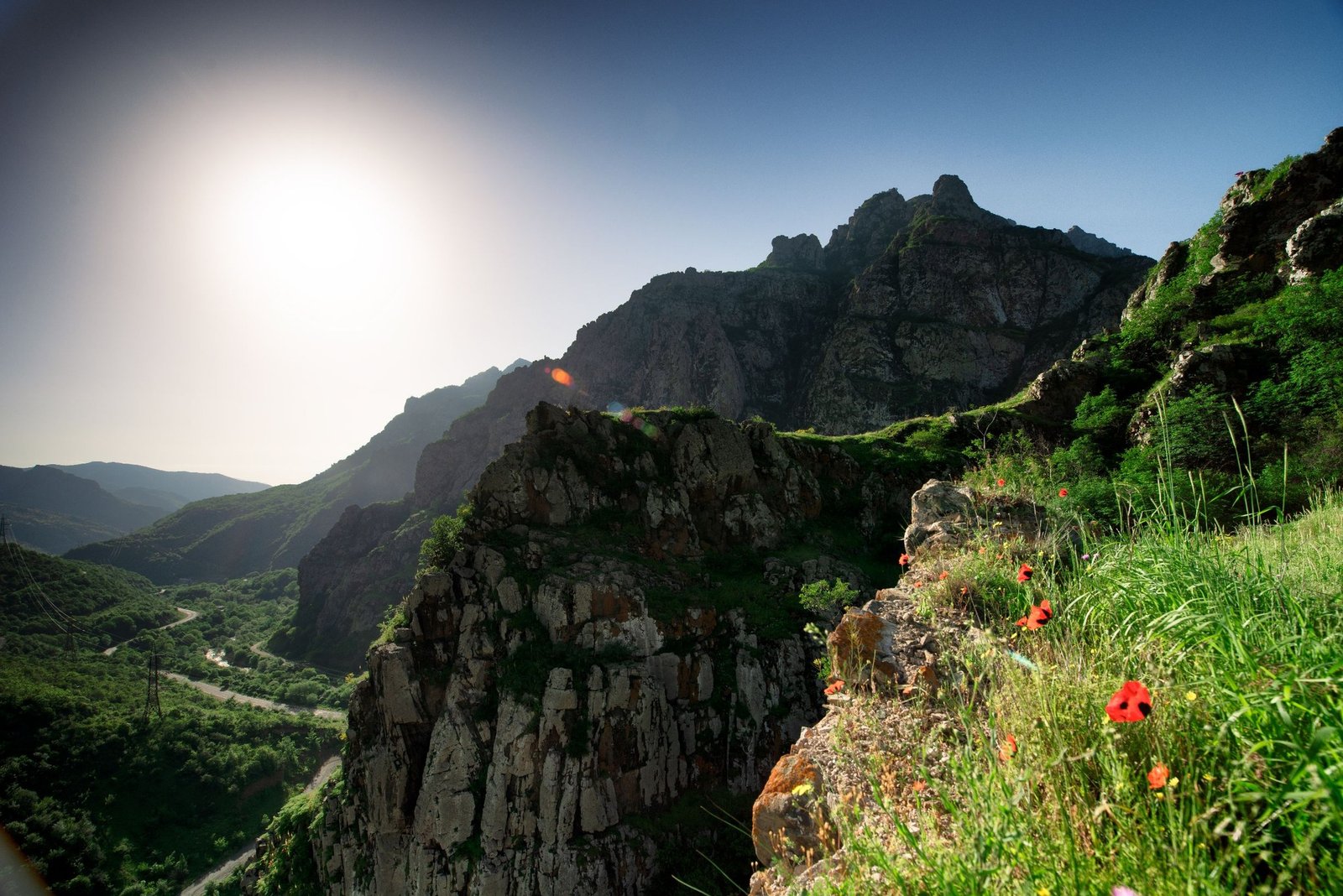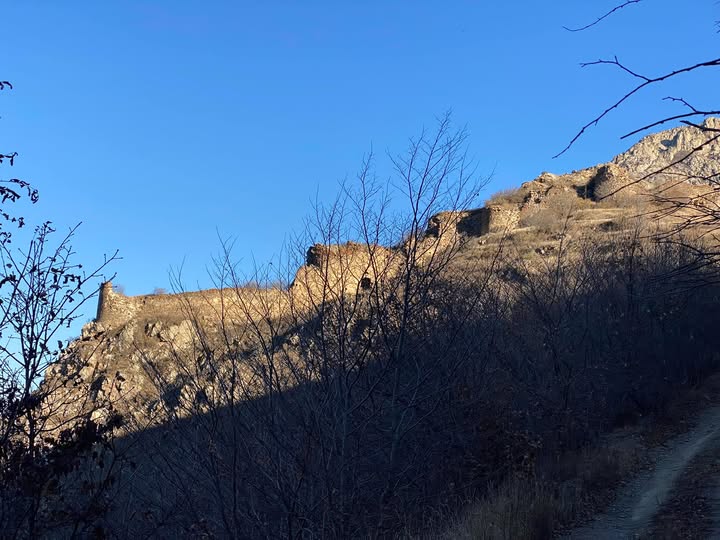Latest Listings
Related Listings
Close To You
Baghaberd Fortress

Fortress
1438 m
Historical
Easy
VISITOR INFORMATION
Location: About 14 km southeast of Kapan city
Coordinates: 39°03'38" N, 46°27'00" E
Period: 4th-5th centuries
Other names: Baghach Fortress, Baghberd, Paghabert
Best time to visit: May to October
Accessibility: By car to a nearby road, then a short hike
OVERVIEW
Baghaberd, the ancient witness of Syunik’s fortresses, stands as a symbol of Armenian resistance. Built atop natural rocky formations, this medieval fortress was not only of strategic military importance but also served as a cultural and political center. Today, the ruins of Baghaberd attract lovers of history and nature, offering magnificent views and unforgettable impressions.
HISTORY
Baghaberd was founded in the 4th–5th centuries and for a long time served as the main stronghold of the Principality of Syunik. For several centuries, it withstood attacks from various conquerors, preserving the independence of Syunik.
Baghaberd was built atop a rocky plateau surrounded by the deep gorges of the Voghji and Girataz rivers, occupying a dominant position that allowed control over the historic city of Kapan. The roads north of Baghaberd connected it with Tatev, Arevik, and Goghtn. The fortress was part of Kapan’s centralized defensive system, which secured the eastern and western approaches to the city.
In the 4th century, Prince Andok of Syunik successfully defended Baghaberd against three assaults by the Persian King Shapur. In the 9th century, Arab general Bugha attempted to capture the fortress but failed. In 1103, the Seljuk Turks captured Kapan but were unable to seize Baghaberd. In 1170, about 67 years later, the forces of Atabeg Eldiguz managed to capture Baghaberd, which had remained impregnable for centuries, through treachery. After that, the fortress gradually lost its significance. According to historical sources, the fortress served as the last refuge for the princes of Syunik during Arab, Seljuk, and Mongol invasions. It is also known that in the 18th century, David Bek used Baghaberd during his liberation struggle.
After the fall of Kapan, Baghaberd became the new capital of the Kingdom of Syunik and grew significantly, becoming not only a military but also an economic and cultural center. The treasures and manuscripts of Tatev Monastery were concentrated here.
ETYMOLOGY
Baghaberd is mentioned in historical records under different names: Baghach Fortress, Baghberd, and Paghabert.
According to Stepanos Orbelyan, the fortress was founded by a nobleman of the Bagk family of Syunik named Baghak. He fortified the rock and built the fortress, resulting in the name "Baghak’s Fortress"—Baghaberd. The same root is the origin of the region’s name, Bagk (Baghach World), which included Kapan, Arevik, and Dzor.
Several famous historians have mentioned Baghaberd, including Shapuh Bagratuni (9th century), Hovhannes Draskhanakerttsi (10th century), Vardan Areveltsi (13th century), Mkhitar Ayrivanetsi (13th century), and Stepanos Orbelyan (13th–14th centuries).
ARCHITECTURAL FEATURES
Baghaberd is located at the confluence of the Voghji and Girataz rivers, about 200 meters above the riverbed. The fortress is built in accordance with the natural shape of the cape and is divided into three levels.
The first defensive belt is located at the lowest level near the Girataz River. A 60-meter-long section of vertical wall has been preserved here, which protected the narrow part of the natural watershed, allowing access to the fortress. The second level is located about 150 meters higher, where a semicircular hollow watchtower with a rectangular loophole is situated. From this tower, it was possible to observe the Voghji river valley and monitor enemy movements. At the highest level above the river, there are fortified walls composed of broken vertical sections. At the corners, semi-circular, pyramid-shaped defensive towers (bastions) are placed, with diameters ranging from 7 to 12 meters.
The fortress entrance is located on the southwestern side, where the walls are at their thickest. The entrance was protected by a watchtower, loopholes, and a typical Armenian fortress defensive corridor. Enemies entering would find themselves trapped in a narrow passage protected by guard towers and loopholes, greatly complicating any assault. The unique design of the loopholes allowed for combat in two directions, providing maximum protection for the entrance.
The total length of Baghaberd’s walls is about 270 meters. The walls were built in three different construction phases and have been preserved up to 8 meters high. The walls and towers are triple-layered, made of semi-worked basalt stones with lime mortar layers, 1.20–2.50 meters thick. Horizontal bonds between the stones have been largely preserved, and gaps were filled with mortar, leaving the stones' protruding parts visible.
During construction, a movable scaffolding system was used, and the beam slots are preserved in different parts of the walls. Thick wooden beams were used, making construction easier and strengthening the structure. At the lower part of the eastern wall, a semicircular tower foundation made of rectangular bricks is preserved. The straight wall section near the Voghji River is attributed to the third construction phase, probably built after the capital of Syunik moved from Kapan to Baghaberd.
Baghaberd’s structure is perfectly harmonized with the natural landscape. Built on steep rock formations, the fortress walls blend with the cliffs, creating an almost impregnable defense. Despite the damage of time and wars, high sections of the walls, remains of observation points, and tower bases have survived. The irregularly shaped towers provided maximum protection from all directions.
PRESERVATION AND RESTORATION
To date, no large-scale restoration work has been carried out at Baghaberd. In recent years, local communities and initiatives have been working to increase interest in Baghaberd by organizing eco-hikes and cultural events, contributing to the monument’s preservation.
LOCAL TRADITIONS AND CULTURE
Among locals, numerous legends about the fortress have been preserved, telling of its impregnability, heroes, and betrayals.
According to a popular legend, Baghaberd was once considered an impregnable fortress. For centuries, enemies tried to capture it but failed; built upon high rocks, the fortress was nearly impossible to conquer by force or siege. The fortress eventually fell due to betrayal. One of Baghaberd’s princes organized a wedding feast at the fortress. During the festivities, the gates were left open, and the enemy, taking advantage of the moment, entered at night and captured the fortress. Thus, Baghaberd’s fall was not by force but by human negligence.
In another version, it is said that a treacherous prince, deceived by promises of riches and fame, secretly opened a hidden path for the enemy, leading to the fortress’s downfall.
Facilities
Nearby
A 10th–11th century monastic complex founded by Prince Vahan of Syunik. Vahanavank served as a spiritual center and is famous for its peaceful and scenic landscapes.
A 17th-century fortress that served as the headquarters of David Bek during his liberation struggle. The fortress is located on a high hill and offers impressive views of the surrounding nature.
The regional center of Syunik, and historically the capital of the Kingdom of Syunik during the Middle Ages. Kapan is rich in ancient fortress ruins, churches, and remains of medieval bridges.
A village known for its medieval churches and beautiful natural surroundings. Chakaten is a great starting point for mountain hikes and adventure tourism.
Tatev Monastery is a masterpiece of 9th-10th century Armenian architecture. It served as the spiritual and educational center of Syunik. The medieval University of Tatev operated here. The monastery is now famous for the “Wings of Tatev,” the world’s longest cable car.

